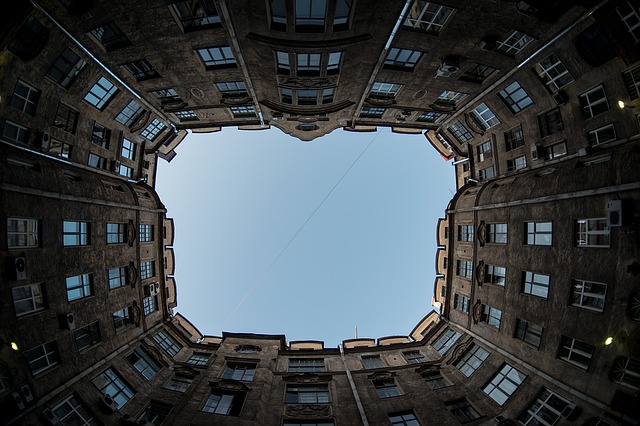
For Russia, the great prize is a Europe where it’s accepted on equal terms with other European nations and can share in Europe’s economic and technological progress. A ‘common European home’ was a core element of the Gorbachev revolution and remains an objective today.
Russia west of the Urals accounts for 38% of Europe. Nearly 80% of Russia’s population (roughly 112 million people) lives on the Great European Plain that extends from the Pyrenees to the Urals and from the Arctic Basin to the Black Sea. It was a key concern of Cold War strategists when it was dominated by the Warsaw Pact, and it remains of great strategic importance to both NATO and Russia.
The Cold War was over when Gorbachev spoke to the Council of Europe in July 1989. He envisioned Soviet states with genuine democratic socialism—characterised by greater freedom and openness and with modern economies—competing peacefully with their neighbours in a ‘common European home’. Gorbachev spoke of ‘the emergence of a vast economic space from the Atlantic to the Urals where Eastern and Western parts would be strongly interlocked’. He said, ‘It is in such a Europe that we visualise our own future.’
Gorbachev then lost control of the forces he had unleashed. His new synthesis of socialism and democracy in Eastern Europe based on ‘universal values’ evaporated as communist regimes were overthrown, the Warsaw Pact was dissolved in July 1991 and the Baltic states were granted independence in September. By the end of 1991, the Soviet Union was gone. The former Warsaw Pact nations began joining NATO in 1997, and 10 Central and Eastern European nations joined the EU in 2004. These weren’t Gorbachev’s new updated socialist states but democratic nations with market-oriented economies.
The period from 1989 into the 1990s is crucial to understanding Russia’s policies and actions towards the EU today. The Russians see it as a time of betrayal, when solid assurances fundamental to the security of Russia—given in the context of German reunification—were abandoned by the US and its European NATO allies. The Russians firmly believe that in 1990, at the ‘highest levels’, a pledge was given not to enlarge NATO to Central and Eastern Europe. There was scope for misunderstanding, but there’s evidence to support Russia’s grievances.
In Understanding conflict between Russia and the EU (2006), Sergei Prozorov points out that, until the late 1990s, EU expansion (in contrast to NATO expansion) into the former Soviet satellites was seen in Russia as beneficial. But with the intervention in Kosovo and EU criticism of Moscow’s policies in Chechnya, some Russian doubts about the EU emerged before 2000. Then the Schengen area was expanded in 2003 to include the Czech Republic, Estonia, Hungary, Latvia, Lithuania, Poland, Slovakia and Slovenia. That greatly complicated Russia’s dealings with its former allies and drew a clear line excluding Russia from Europe.
However, in 2005, Vladimir Putin still declared ‘above all else’ that Russia was ‘a major European power’. He also observed that ‘The Russian nation has always felt part of the large European family’ and supported ‘a single Greater Europe from the Atlantic to the Urals’. He emphasised ‘Russia’s efforts to develop integrationist ties with both EU countries and CIS states’ in pursuit of ‘a significant expansion of common, harmonious spaces of security, democracy, and business cooperation’.
But the EU is ‘an inherently normative project’ that ‘rejects the delinking of its technical and socio-political norms’. It has made clear that ‘Russia cannot modernise its economy and become part of a wider shared economic and human space with the EU without also conducting political reforms’.
The increasingly nationalistic turn in Russia’s foreign policy, and illiberal domestic developments, have made closer EU relations less likely in the short term. A marked turning point in Russian attitudes to the EU followed the imposition of sanctions over Ukraine. For Russia, EU demands and actions infringe its sovereignty and threaten its culture and autonomy. Putin made that clear at Munich in 2007.
Russia came to see the EU as the threat and a barrier to closer relations with the individual European nations. The Russians have found allies among many ‘insurgent’ parties in Europe, and many of Europe’s right-wing or Eurosceptic parties are pro-Russian. So-called European populism is a complex political, social, ethnic and cultural phenomenon that presents the Russians with opportunities to undermine the EU. Europe’s populists routinely ‘channel subversive Russian propaganda and help erode Europeans’ trust in the EU, NATO, and liberal democratic politics at large’.
The EU project requires consensus among the member states on economic, security and social policy. Russia understands that to destabilise the EU it doesn’t have to alienate all of the member states from the EU—which explains Russian encouragement of and moral and financial support for Eurosceptic parties.
This makes the success of the Alternative für Deutschland in Germany, and the looming success of the Freiheitliche Partei Österreichs in Austria, a significant strategic development for Russia. In addition to the pro-Russian regime in Hungary, their very presence in national assemblies and the European Parliament shifts the debate to areas favourable to Russia and makes Europe-wide consensus more difficult to achieve on many issues. They provide Russia with a very low-cost tool for pursuing a long-range strategic objective in Europe to the detriment of the EU as an institution.
In ‘Europe as seen from Russia’, Vladimir Baranovsky and Sergey Utkin argue that Russia still sees great advantages in being accepted as a normal European country, but in a common European home where the EU is seriously weakened or, preferably, gone.

